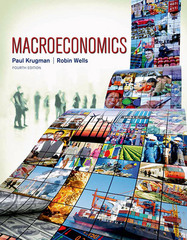
1 Natural Disasters, TFP, and Immigration We use the simple general equilibrium model of a production economy that we studied in class. We choose functional forms for preferences and technology to quantify the geneml equilibrium effects on wages, employment, and returns to capital of (i) a technological improvement, (ii) a reduction in physical capital due to a natural disaster, and (iii) immigration. The economy is populated by a large number M of identical consumers and by many identical rms. Each of the M consumers is initially endowed with h units of time, for work and leisure, and with one unit of capital, which is supplied inelastically (independently of its rental rate 1') because it has no alternative use, so in equilibrium all of existing capital is used in production. Each consumer has preferences over consumption 0 of the only good produced and leisure 6 represented by the utility function: U(C',l)=log(C-). The only good in the economy is produced with capital K and labor N, combined together with CobbDouglas technology Y = zNaKl'\" to produce an amount Y of output. Government levies a lumpsum tax T on each. worker, and spends all tax revenues to purchase from rms an equal amount of goods, that it then throws into the ocean (or, equivalently, that it then uses to produce public services that do not directly enter people's pref erences). So the government balances the budget and government spending (G per capita) appears only in the resource constraint, not in the utility function nor anywhere else. All the assumptions suicient for the welfare theorems are satised, so the competitive equilibrium allocation is Pareto e'lcient and can be found by solving the planner's problem. Instead of solving for optimal behavior of many consumers and rms, and then looking for marketclearing prices, we can solve the much simpler single decision problem of a planner. 1. Write the equation for the Production Possibility Frontier (PPF) of the economy, which represents the feasible social tradeoff between aggre gate consumption and aggregate leisure. Aggregate capital should not appear as an unknown in this equation, but should be replaced by its existing quantity. I.e., the PPF takes into account how much aggregate capital exists and should be used. Do not forget government spending G per capita, that we take as given. Then express the PPF in per capita terms, i.e. per capita consumption 0 as a function of per capita leisure E. You should obtain: 0 = z(h E)\" G. Credit is given to the derivation, which takes a few steps. 2. Write the problem of a socalled utilitarian and benevolent social plan ner, who chooses C and f to maximize the sum of the consumers utili ties, which is simply M - U (C, E) as all agents are identical and treated equally, subject to the PPF. We assume that the planner takes G as given. To simplify the problem, you can rst show that it is equivalent to state it and solve it in per capita terms: maximize per person utility U (C, 6) given the per capita PPF









